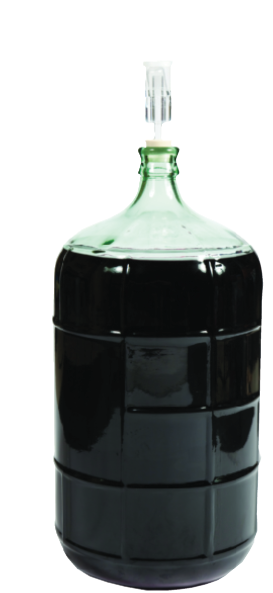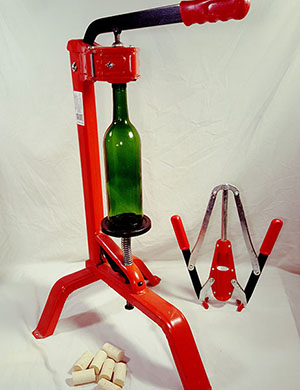
Air exposure is one of the biggest enemies of wine after primary fermentation as it can cause oxidation and microbial spoilage. With that in mind, one way to prevent excessive oxygen contact is by monitoring the amount of airspace in your bulk storage vessels (barrels, carboys, tanks, etc.) after primary fermentation and limiting exposure as much as possible by topping up your wine.
When to top up
Airspace in your fermenter during primary fermentation is not a concern the way it is after fermentation is complete, and you will actually need greater airspace during fermentation to leave room for foaming that occurs during fermentation. You also need not worry about oxidation during active fermentation because this process of yeast consuming sugars creates carbon dioxide (CO2), which blankets the wine with a layer of gas to protect it from oxygen contact.
This production of CO2 ceases when fermentation is complete, however, which means that once your wine reaches dryness it is time to top up your fermenter so the wine is not exposed to oxygen and susceptible to microbial spoilage.
During bulk aging, monitoring the amount of airspace in your vessel is crucial as it changes over time. This is especially true when using oak barrels — even if your barrels don’t have any leaks (and hopefully they don’t!), wine volume can still be lost due to evaporation and the oak soaking up some of the wine. Barrels should be checked every couple of weeks, and if you see any headspace then it’s time to top up! If storing in carboys, absorption isn’t a concern but it is still a good idea to keep an eye on things. A major time that topping up is needed for glass containers is after racking, as this process leaves sediment and some wine behind and if racked to a similar- sized vessel, air will take its place if not topped up.
How to top up
Topping up is best done by adding more wine to limit airspace between the wine and the bung. One of the best ways to ensure you have wine on hand that can be used for topping up when the time comes is to make extra wine with each batch. Ferment the entire batch (this may mean fermenting the extra in a one-gallon/4-L jug if it doesn’t fit in your primary fermentation vessel) and keep the extra wine separate until needed. Or, if you are making wine from fresh grapes, you could choose to separate the pressed juice (vs. the free-run juice) and use it for topping up as needed. If you do not have extra wine from the same batch, another option is to use a previous wine from your cellar, or use commercial wine of a similar style to top off (this works much better for topping off a 5-gallon (19-L) batch of wine compared to a 60-gallon barrel, considering the added expense. Although, of course, you get back the added wine at bottling time!).
Another option that many home winemakers use is to add glass marbles to the vessel to fill the empty space in your vessel. If doing this, make sure to sanitize the marbles first so as not to introduce spoilage organisms. Because of their small size, marbles work great as they can be added in small increments over time.
One last option that is commonly used in commercial wineries is using inert gas such as nitrogen, argon, or CO2. This is only recommended for short-term storage, as it will not purge all of the oxygen from the container. From Alison Crowe in the December 2009-January 2010 “Wine Wizard” column: “Even if you slowly and carefully dispense the argon into the top of your container, you are still only mixing it with the oxygen, nitrogen, etc. (viz, air) that is already there. Ergo, you will never achieve a 100% inert gas blanket . . . It may keep your wine sound for 1–4 months but beware of VA (volatile acidity) creep, free SO2 disappearance, spoilage, and oxidation thereafter.” As she goes on to state, there is no substitute for a topped up vessel.
If you find it difficult to make enough wine for your size vessel, the best solution is either buying additional, smaller vessels so you always have one close to the size of the batch you are making, or investing in a variable-capacity tank (which will still need to be monitored).
Winemaking requires a lot of patience as you allow your wine to age, however this downtime does not mean you can just forget about your wine. Keep an eye on it, top up when needed, and make the wait worthwhile.







